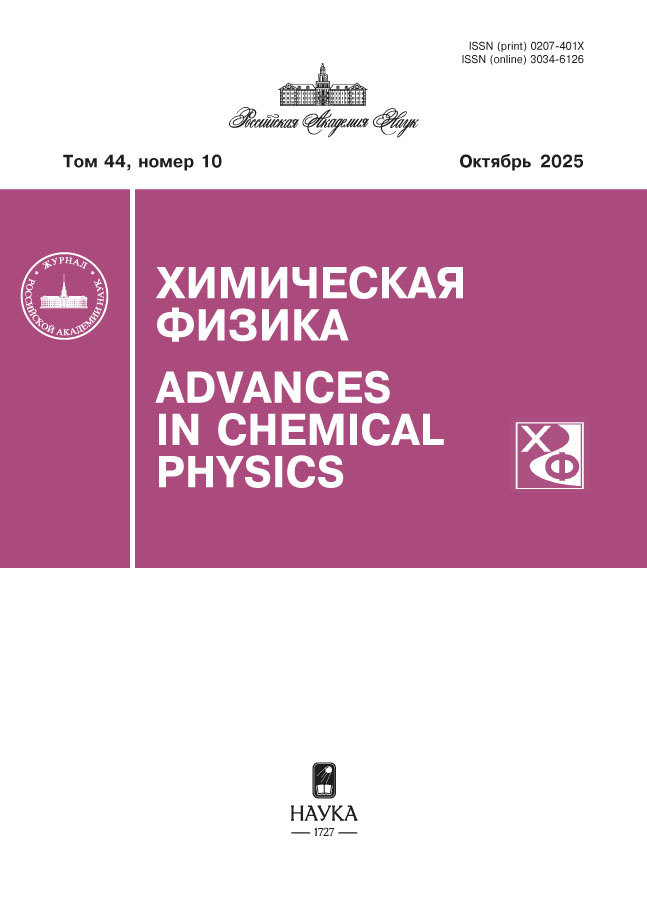Трехмерное математическое моделирование детонации в двухфазных системах газообразный окислитель – капли жидкого горючего
- Авторы: Иванов В.С.1, Фролов С.М.1,2
-
Учреждения:
- Федеральный исследовательский центр химической физики им. Н.Н. Семёнова Российской академии наук
- Национальный исследовательский ядерный университет “МИФИ”
- Выпуск: Том 43, № 10 (2024)
- Страницы: 61-70
- Раздел: Горение, взрыв и ударные волны
- URL: https://cijournal.ru/0207-401X/article/view/680952
- DOI: https://doi.org/10.31857/S0207401X24100054
- ID: 680952
Цитировать
Полный текст
Аннотация
Приведены результаты трехмерного моделирования процесса распространения детонационных волн в двухфазной смеси воздух – капли жидкого изооктана. Методика расчета детонации основана на решении трехмерных уравнений двухфазного сжимаемого турбулентного реагирующего течения с учетом движения, дробления, нагрева и испарения капель и конечных скоростей смешения топливных компонентов и химических превращений. Достоверность методики проверена путем сравнения расчетных и измеренных скоростей гетерогенной детонации в вертикальном канале квадратного сечения. Рассмотрено влияние предыстории формирования двухфазной горючей смеси на скорость и структуру детонационной волны, в частности учтено влияние коагуляции капель. Получены новые данные о структуре детонационной волны в двухфазных системах.
Полный текст
Об авторах
В. С. Иванов
Федеральный исследовательский центр химической физики им. Н.Н. Семёнова Российской академии наук
Email: smfrol@chph.ras.ru
Россия, Москва
С. М. Фролов
Федеральный исследовательский центр химической физики им. Н.Н. Семёнова Российской академии наук; Национальный исследовательский ядерный университет “МИФИ”
Автор, ответственный за переписку.
Email: smfrol@chph.ras.ru
Россия, Москва; Москва
Список литературы
- Roy G.D., Frolov S.M., Borisov A.A., Netzer D.W. // Progr. Energy Combust. Sci. 2004. V. 30. Issue 6. P. 54.
- Фролов С.М., Аксёнов В.С., Иванов В.С., Шамшин И.О., Набатников С.А. // Горение и взрыв. 2019. Т. 12. №1. С. 63.
- Быковский Ф. А., Ждан С.А. Непрерывная спиновая детонация. Новосибирск: ИГиЛ СО РАН, 2013.
- Фролов С.М., Иванов В.С., Шамшин И.О. и др. // Горение и взрыв. 2022. Т. 15. №1. С.67.
- Фролов С.М., Иванов В.С. // Хим. физика. 2021. T. 40. № 4. C. 68.
- Smirnov N., Nikitin V., Dushin V.R. et al. // Acta Astronautica. 2015. V. 115. P. 94.
- Fedorov A., Khmel T.A. // Combust. Explos. Shock Waves. 2005. V. 41. P. 435.
- Dabora E.K., Weinberger L.P. // Acta Astronautica. 1974. V. 1. P. 361.
- Митрофанов В.В. Детонация гомогенных и гетерогенных систем. Новосибирск: Изд-во Ин-та гидродинамики им. М. А. Лаврентьева СО РАН, 2003.
- Kailasanath K. // AIAA J. 2003. V. 41. №2. P. 145.
- Tangirala V., Dean A., Peroomian O., Palaniswamy S. // Proc. 45th AIAA Aerospace Sciences Meeting and Exhibit. V. 24. Reno, NY, 2007. P. 1173. doi: 10.2514/6.2007-1173
- Frolov S.M., Posvyanskii V.S. // Explosion Dynamics and Hazardss Eds. by Frolov S.M., Zhang F., Wolanski P. Moscow: Torus Press, 2010. P. 337.
- Meng Q., Zhao M., Xu Y., Zhang, L., Zhang H. doi: 10.48550/arXiv.2209.11913. 2022
- Jourdaine N., Tsuboi N., Hayashi A.K. // Combust. And Flame. 2022. V. 244. P. 112278.
- Иванов В.С., Фролов С.М. // Горение и взрыв. 2010. № 3. C. 63–70.
- Ivanov V.S., Shamshin I.O., Frolov S.M. // Energies. 2023. V. 16. P. 7028.
- Фролов С.М., Аксёнов В.С., Шамшин И.О. // Хим. физика. 2017. T. 36. № 6. C. 34.
- Tannehill J.C., Dale A.A., Pletcher R.H. Computational fluid mechanics and heat transfer. Washington DC: Taylor and Francis, 1997.
- Versteeg H.K., Malalasekera W. An introduction to computational fluid dynamics: the finite volume method. London: Longman Scientific and Technical, 2007.
- Dukowicz J. K. Quasi–steady droplet change in the presence of convection Los Alamos: University of California, 1979.
- Reitz R.D. // Atomisation Spray Technology. 1987. V. 3(4). P. 309.
- Pope S.B. // Prog. Energy Combust. Sci. 1985. V. 11. № 2. P. 119.
- Frolov S.M., Ivanov V.S., Basara B., Suffa M. // J. Loss Prevention Process Industries. 2013. V. 26. P. 302.
- Frolov S.M., Ivanov V.S. // Deflagrative and detonative combustion / Eds. Roy G., Frolov S. Moscow: Torus Press, 2010. P. 133.
- Mangani L., Bianchini C. // Proc. OpenFOAM International Conference. V. 1. 2007. P. 1; https://flore.unifi.it/retrieve/handle/2158/418277/15222/OFIC-07.pdf
- Авдеев К.А., Иванов В.С., Фролов С.М., Basara B., Priesching P., Suffa M. // Горение и взрыв. 2012. T. 5. C. 91.
- Пискунов В.Н. Теоретические модели кинетики формирования аэрозолей. Саров: РФЯЦ-ВНИИЭФ, 2000.
- Басевич В.Я., Беляев А.А., Медведев С.Н., Посвянский В.С., Фролов C.М. // Горение и взрыв. 2015. Т. 8. № 1. C. 21.
- Naik C., Westbrook, C.K., Herbinet O. Pitz W. Mehl M. // Proc. Combust. Inst. 2011 V. 33. P. 383.
- Wu Z., Mao Y., Yu L., Qian Y., Lu, X. // Combust. and Flame. 2021. V. 228. P. 302.
- Фролов С.М., Поленов А.Н., Гельфанд Б.Е., Борисов А.А. // Хим. физика. 1986. T. 5. №7. C 978.
Дополнительные файлы















